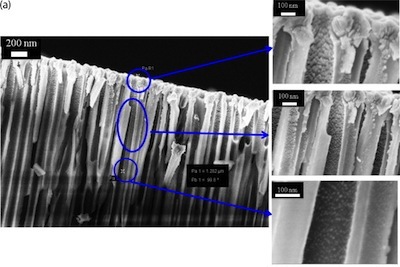Ask for a reprint
email :
* Give your email
2013
ACL
|
S.Wu, P.Brault, C.Wang, B.Courtois, 'The impact of thermal annealing on the morphology of sputter deposited platinum clusters into anodic aluminum oxide pores', Appl. Surf. Sci. 266 400– 404 (2013) doi:10.1016/j.apsusc.2012.12.044
The influence of post deposition annealing (PDA) up to temperatures of TPDA = 900 °C on the morphology and agglomeration behavior of ambient temperature sputter deposited platinum onto anodic aluminum oxide templates is investigated. Both cluster agglomeration and diffusion processes occur on the surface and on the inner channel walls. When the annealing temperature is less than 400 °C, particles are diffusing inside the channels. Around TPDA = 400 °C, a particle agglomeration process is taking place. A diffusion process is playing an important role and the Pt particles are able to reach a depth of 12 μm. The surface morphology exhibits a remarkable change for annealing temperature above 600 °C, where Pt is migrating on the outermost surface for forming flat films. When further enhancing TPDA to 900 °C, the particles on the surface and in the channels agglomerate together to form separated large flat islands. Moreover, the maximum channel depth where platinum is present is around 12 μm.
|

|